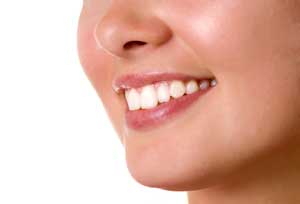Taking Care of your teeth

Maintaining good oral hygiene is one of the most important things you can do for your teeth and gums. Good oral health is important to your overall well-being.
Daily preventive care, including proper brushing and flossing, will help stop problems before they develop. In between regular visits to the dentist, there are simple steps that we can each take to greatly decrease the risk of developing tooth decay, gum disease and other dental problems. These include:
- Brush your teeth twice daily: Brush your teeth twice a day to avoid majority of the dental problems.
- Use a Dental Floss: Flossing cleans the areas which are harder for a toothbrush to reach. It removes the food debris and plaque accumulated betweenthe teeth.
- Use of Mouth Washes: Mouthwashes possess effective antiseptic properties. They kill the bacterial plaque known to cause bad breath, tooth decay andgingivitis. Use a mouthwash AFTER BRUSHING as per its directions.
- Eating right: Maintain a balanced diet but reduce the consumption of foods containing sugars or starch. Sugary Foods( fizzy drinks & sweets) and Starchy foods(crisps, snacks) play an important role in causing tooth decay.
- Avoid in between eating habits: Snacking between meals makes the teeth prone to tooth decay. The bacterial action is greatest at acidic Ph. The Ph is most acidic immediately after meals and gradually reduces and comes to a normal level. Eating in between meals does not allow the acidic level to come down increasing bacterial action leading to caries.
- Quit Smoking: Smoking not only stains your teeth but also damages your gums by reducing the blood supply. It also causes smokers breath.
- Regular visits to your Dentist: It is essential to visit your dentist once in 3-6 months to diagnose any oral concerns early. Most oral health problems do not produce any symptoms till they have progressed to a later stage.
How to Brush Your Teeth?
Proper brushing should take at least two minutes! Most adults do not come close to brushing that long. To properly brush your teeth, use short, gentle strokes, paying extra attention to the gumline, hard-to-reach back teeth and areas around fillings and crowns. Concentrate on thoroughly cleaning each section as follows:
- Clean the outer surfaces of your upper teeth, then your lower teeth.
- Clean the inner surfaces of your upper teeth, then your lower teeth.
- Clean the chewing surfaces.
- For fresher breath, be sure to brush your tongue, too.
Common causes of Bad Breath
Halitosis which is commonly referred as BAD BREATH affects a substantial number of people in all countries. The causes range widely but 85-90% of all the causes originate from the mouth itself.
Some of the most common causes of bad breath are:
- Accumulation of Food Debris: The most common cause for bad breath is the accumulation of food debris on or between the teeth, resulting from poor oral hygiene. These food particles are acted upon by anaerobic bacteria producing respiratory products which give off the characteristic rotten egg smell.
- Tooth Decay: The decay of tooth by bacteria is an important causative agent of bad breath. The bacteria have putrefactive (rottening) action on the tooth leading to its demineralization causing halitosis.
- Dryness of mouth (Xerostomia): Saliva has extensive anti-bacterial action. When there is reduction or absence of saliva in the oral cavity, it leads to accumulation of plaque which favors bacterial growth causing bad breath.
- Gum Diseases: Gum diseases and periodontal diseases are important causative agents of bad breath.
- Smoking: Smoking causes smokers breath which is due to the accumulation of nicotine, tar and other foul smelling substances in the oral cavity.
- Severe Dieting: Apart from the innumerable other harmful effects, severe dieting also causes bad breath due to ketoacidosis because of prolonged starvation.
- Extra-oral sources: The extra oral causes of bad breath include infections of respiratory tract, diabetes and kidney dysfunction.

